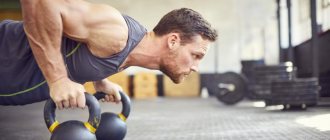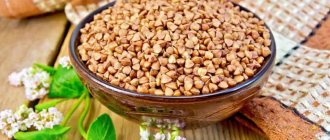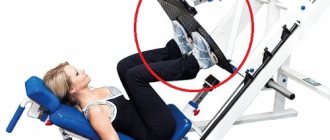All people are different. Some are lucky and have periods without noticeable symptoms, while others have to cancel training during “these days.” Understanding your menstrual cycle and the hormonal fluctuations your body experiences will help you take advantage of each phase of the period.
Below, we'll explore the ins and outs of your menstrual cycle, drawing on the experience and advice of medical experts, coaches, and elite athletes to help you learn how to work with your hormones, rather than fight them.
Is it possible to continue training during menstruation?
There is no clear answer to this question simply because everyone’s reaction is different. The point is that when your period starts varies, but most women will experience it regularly and it shouldn't stop you from exercising.
Hormones work differently during menstruation. Some people don't experience much pain or sluggishness during their periods and live and exercise as normal. Some experience high levels of PMS (premenstrual syndrome) in the days leading up to their bleeding, which is accompanied by a variety of symptoms - and some continue to feel ill at the start of their period, while for others these symptoms go away completely. Depending on your individual physiology, you can use the first week of your cycle as a time for rest and recuperation, or vice versa - for intense training and participation in competitions.
If you feel you can, train as hard as you can. If not, then rest. The most important thing is to listen to your body.
Preparing for training: choosing the right clothes, stocking up on water
For women and girls who work out in the gym, an equally important point during critical days is the right clothes for training. These days, it is advisable to switch to a looser uniform: wide sweatpants and a loose T-shirt are preferred. Avoid wearing short shorts or tight leggings. Don't forget to take a water bottle with you to the gym. During your period, you need to consume more water than usual, especially if you engage in physical activity.
For comfortable fitness, choose loose trousers in dark colors.
How key hormones fluctuate in the menstrual cycle
The menstrual cycle is not just a week of menstruation, it is the entire period from the start of bleeding until the next menstruation. On average, the cycle lasts 28 days and consists of 3 key phases.
In the follicular phase, which shortens significantly with age and lasts about 14 days in women aged 18-24 years (compared to 10 days in women aged 40-44 years), there is a gradual increase in the hormone estradiol until the ovulation phase. Estradiol is essential for maintaining healthy bones and muscles, as well as cognitive function.
During the ovulatory phase, which lasts about three days, luteinizing hormone is released. Within 36-48 hours, several waves of release occur and its concentration in the blood plasma increases significantly. At this time, the concentration of estradiol decreases slightly (but it is still significantly higher than at the beginning of the cycle) and a smooth increase in the hormone progesterone begins. Its main purpose is to prepare the body for pregnancy, as a result of which the uterine mucosa thickens.
After ovulation, the luteal phase begins, which lasts about 14 days and lasts until the next menstrual cycle. In this phase, progesterone increases and the concentration of estradiol increases again, reaching a peak in the middle of the phase. Then all hormones begin a gradual decline and reach their original values by the beginning of the next cycle.
What it is
Here I would like to say that menstruation implies detachment of the functional layer of the endometrium, accompanied by bleeding. In other words, if a woman does not become pregnant during the ovulation period, then her menstruation begins on time. This process is accompanied by general malaise, pain in the lower abdomen, and the temperature may even rise. Everyone's periods are different. It all depends on the individual characteristics of the woman’s body.
But is it possible to go to the gym during your period? The answer in this case will be positive if the woman’s menstruation does not affect her general condition. If a girl feels unwell and has severe pain in her lower abdomen, legs and lower back tension, then it is best to abstain from physical activity for several days. This is necessary to prevent increased bleeding. This rule must be remembered.
How concentrations of estradiol and progesterone affect the body during the cycle
It's worth repeating that everyone is different and reacts differently to hormonal fluctuations, but it's important to understand the effects that two key hormones (estradiol and progesterone) can have throughout the cycle. As your hormone levels fluctuate, you may notice changes in your energy levels and body temperature, your ability to focus and motivate yourself, and your overall performance level. And this is important to take into account in training.
Estradiol is one of the two main female reproductive hormones produced by the endocrine system. Its levels rise during the follicular phase until ovulation occurs. The positive effect of estradiol on cognitive function means that the first half of the cycle can be selected for planning and executing tasks that require a lot of attention. At this time, you can notice a surge of energy, which is ideal for intense and strength training.
Progesterone is another main female hormone that is secreted in the second half of the menstrual cycle. It causes an increase in basal body temperature, which can be especially important for those exercising in hot climates. High progesterone levels also contribute to PMS symptoms such as breast tenderness, bloating, and mood swings.
By taking the time to figure out your unique menstrual cycle and understanding how you feel during each phase, you can plan your training and competition. You'll know exactly what your energy levels are and can plan for rest and recovery during low periods.
How to adapt your training and competition schedule
Professional cyclist and coach Yasmin Müller works with 20 athletes of different levels and ages on individual plans that take into account menstrual cycles.
“I see big differences in the first week of my menstrual cycle,” explains Yasmin. – Many of my clients experience decreased performance in the first two or three days of menstruation, which is often associated with pain. They cannot do intense and strength training, while others experience a burst of energy and can gain a lot. During the follicular phase, they are in a good mood and want to try new things.”
Former professional cyclist and Olympian Nikki Brammeier, who now also coaches, speaks openly on her social media about the competitive experience with her menstrual cycle in mind.
“I have found that understanding how hormones fluctuate throughout my cycle allows me to work with my body and better manage my energy,” she notes. – Most often I participated in competitions in the follicular phase. But during the luteal phase, when I wasn't feeling my best, I could get more benefit from intense training, and if I had a key start at that time, I was compromising my body. It allowed me to be kinder to myself and not beat myself up if things didn’t work out.”
Nikki says there is no need to completely rewrite the training plan. You just need to adjust certain workouts to suit your well-being.
“I was able to synchronize my workouts with my menstrual cycle and understand what was happening with my hormones at different times throughout the month. The training plan hasn't changed much, but understanding my body has allowed me to work in sync with my body."
Is it possible to train on critical days?
Now we can move on to the main question: how to structure the training process to obtain the best results with the least risk to health? Obviously, the answer must come from the combination of all factors: physiological and hormonal changes, the level of physical fitness and well-being of the athlete.
Based on scientific research data on the peaks of increase and decrease in performance, we can conclude that during the ovulatory phase and the luteal phase, loads should be reduced. Since most often during these periods there are complaints of decreased concentration, dissipation of attention, drowsiness and increased irritability, technically complex exercises or mastering new movements with a complex coordination structure should be avoided. During menstruation itself, you should avoid exercises that are accompanied by strong stress on the abdominal muscles, straining, and cooling the body.
We should not forget about absolute contraindications to playing sports during menstruation: various menstrual cycle disorders, recent or currently existing infectious or inflammatory diseases of the pelvic organs, puberty.
Many trainers offer their trainees to keep a diary of observations of their emotional and physical state in different phases of the cycle, which, in my opinion, is a very effective method that will help make the training process more productive and safe.
How to prepare for the start of your menstrual cycle
Dr. Stacy Sims, in her book How to Match Food and Exercise to Your Unique Female Physiology, offers a selection of supplements that can help alleviate severe PMS symptoms (if you suffer from them). The kit includes the following supplements, which should be taken every day for a week before the start of menstruation:
- 250 mg magnesium
- 45 mg zinc
- 80 mg baby aspirin
- 1 g omega-3 fatty acids (flaxseed oil or fish oil)
We provide this information for informational purposes - before taking any medications or supplements, you must undergo tests and consult with a specialist.
Yasmin Muller has advised some of her PMS clients to try these supplements and has reported positive results. “Those who took supplements in the week leading up to their period tended to have an easier time in the first week of their menstrual cycle,” she explains. However, she admits it's not a magic pill: "But for some, I still fine-tune the training program with less intense sessions during this period or allow time for recovery."
Action plan:
- Study your menstrual cycle and mark transition points between phases
- Get tested and consult with a specialist about the need to take supplements
- Check how you handle different types of training in each phase
- Adapt your training plan and competition schedule to suit your individual needs
- Progress and achieve success
Tips and tricks for training and exercising on exercise machines during your period
Despite all the benefits of exercising during menstruation, the final answer to the question about exercising during your period should come from your own feelings. If your critical days are accompanied by severe pain throughout the entire period, and it is very difficult for you to exercise during these days, you should not do it through the pain. Your immune system may be weakened during this period, and the additional burden can only be harmful. The best option in this case is a consultation with a gynecologist and jointly identifying the cause of severe pain (abnormal for the body) and then deciding on physical activity in the gym.
In most cases, the peak of menstrual pain occurs in the first two days. Refrain from heavy exercise these days. Drink more water, rest, do not burden yourself with work, especially physical work. On the third and subsequent days, you can return to your usual regimen and start training in the gym, giving preference to aerobics, light cardio, gymnastics and stretching.
If your period is almost painless, there is no need to interrupt your training regimen. Reduce the number of weights or repetitions you do, and increase your cardio and calisthenics time.
Video: recommendations for training in different menstrual phases
So, to summarize: training on critical days is possible and even necessary. But at the same time it is necessary to follow four basic rules: reduce the working weight and/or the number of repetitions; do not perform the prohibited exercises described in the first chapter; train intuitively, by feeling; Rest between sets until complete recovery. Regular training is effective not only in building muscle mass or losing weight. They will also allow girls and women whose menstruation occurs with severe pain in the pelvic area to reduce spasms and discomfort during this period.











